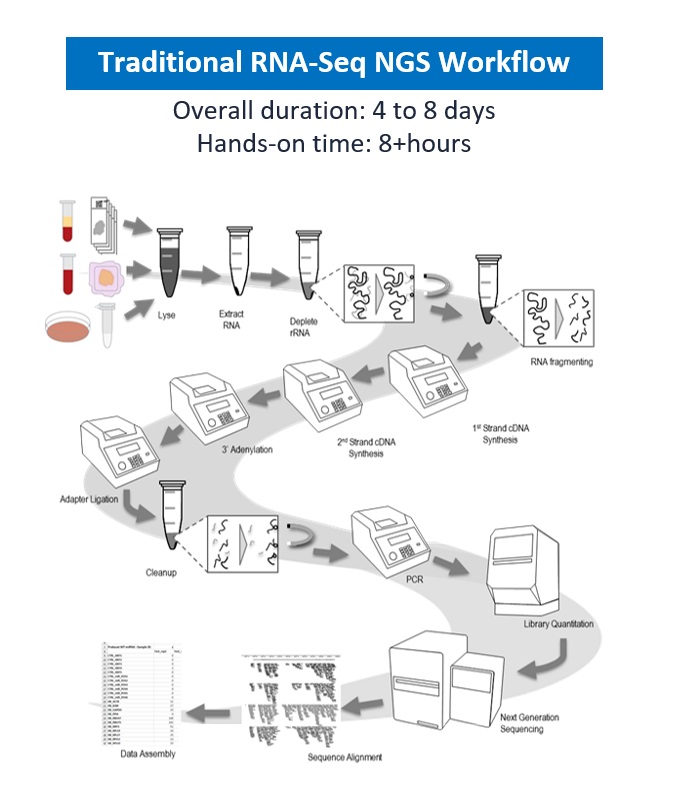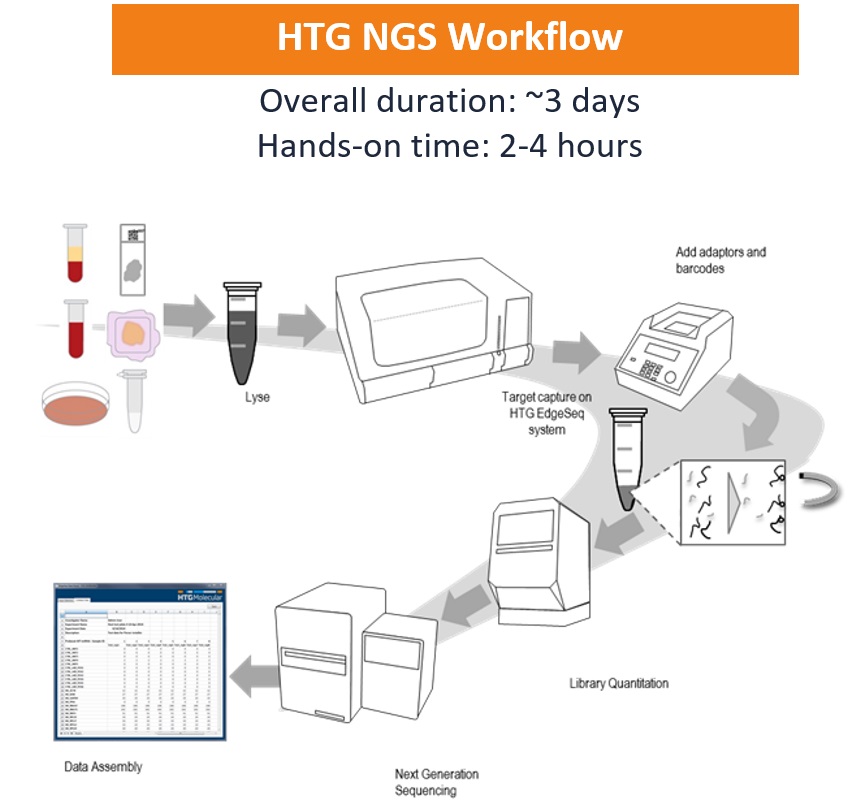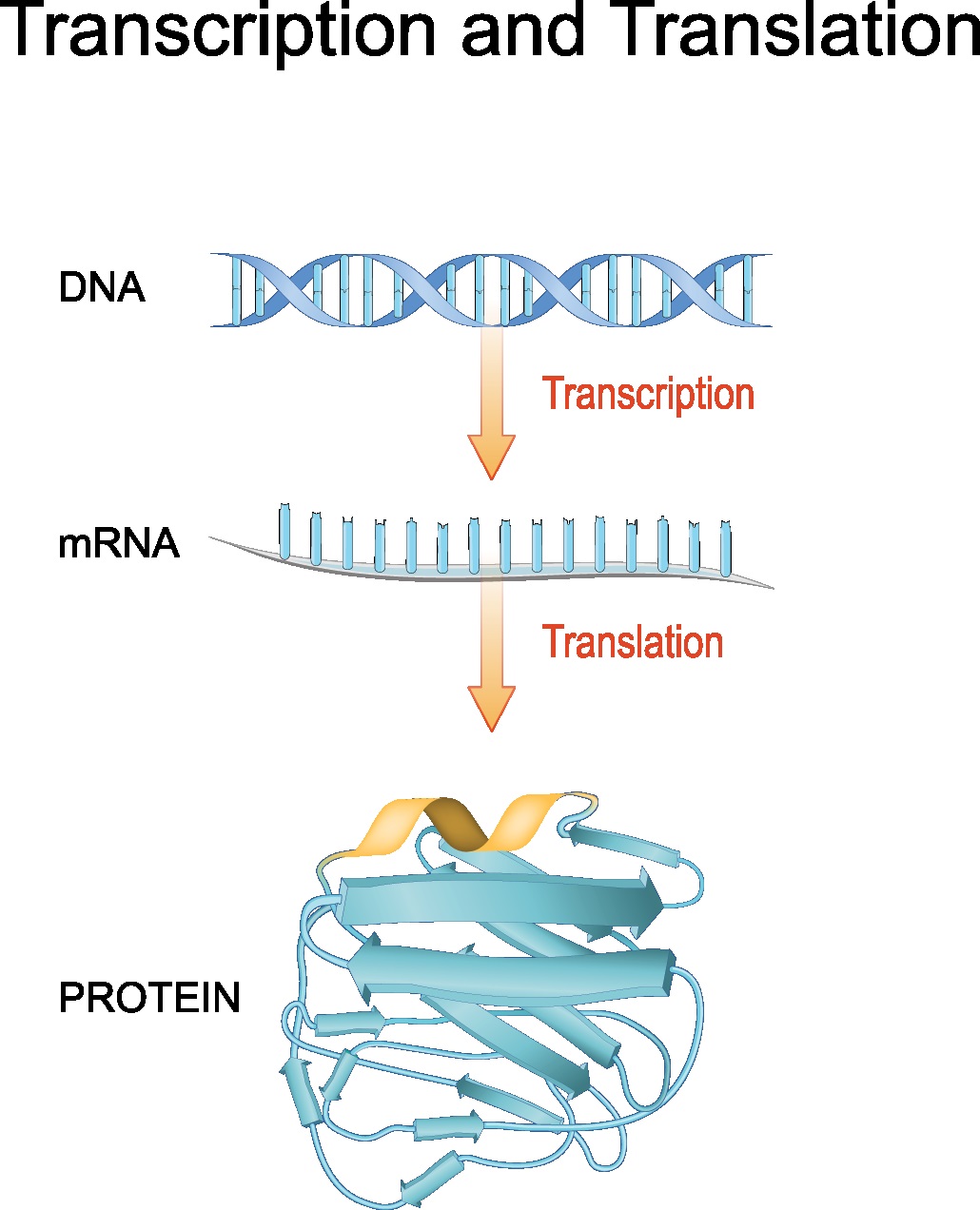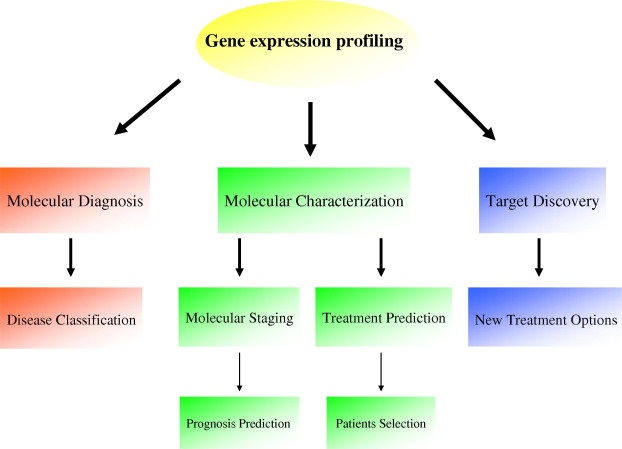Introduction to Gene Expression Profiling
What is the Central Dogma and how does it relate to Gene Expression?
The central dogma of biology describes the process by which information coded in genes is used to create proteins. DNA transcription produces RNA, then RNA translation makes proteins. This process is known as gene expression. All living organisms use it to create the organic building blocks from genetic information.
Each individual cell expresses only a portion of the genes it contains in its nucleus. All of the cells in our body contain the same genetic information; however, neurons and skin cells, for example, have very different functions. This is because cells, based on signals they receive from their surroundings, control which genes from the nucleus are on and off. Controlling which genes are expressed enables the cell to control its size, shape and functions. The ways in which an organism's cells express the genes they contain affects the organism’s phenotype, i.e. its physical attributes or traits.
What is gene expression profiling and what is it used for?
Gene expression profiling measures which specific genes from the entire genome are being expressed in particular cells at any given time. This method can measure thousands of genes at a time; some experiments can measure the entire genome at once. The RNA sequences of different genes are collected in centralized databases such as miRBase. Gene expression profiling measures mRNA or miRNA levels, and whether they become up or down regulated after certain events.
Gene expression profiling, obtained from mRNA and miRNA sequencing, is used for variety of reasons ranging from academic research to drug discovery and therapeutics. This technology can provide accurate information on gene expression towards numerous experimental goals.
Different technologies can be used to determine the differential gene expression. These include microarrays, quantitative RT-PCR, and RNA sequencing(RNA-seq) technologies. RNA-seq is the most cutting edge, comprehensive, and preferred of the available methods.
What is RNA sequencing and how is it used for transcriptome analysis?
RNA-seq (RNA-sequencing) is a technique that can examine the quantity and sequences of RNA in a sample using next-generation sequencing (NGS) . It analyzes the transcriptome on a nucleic acid level, indicating which of the genes are turned on or off and to what extent.
Even though this NGS-based technology is widely used among researchers, the traditional workflow is very laborious, requires ample volume of patient blood or tissue, and can take up to several weeks to complete. Additionally, traditional workflow is prone to more errors and biases.

However, recent advances have been made to make the process more informative, simple, and robust. These new advances in the field aim to overcome some of the shortfalls of the traditional RNA-seq such as need for large sample input, experimental biases stemming from RNA extraction and sample sectioning steps, complexity of biostatistical analysis of large data sets, and high costs associated with time, training, and reagents. Additionally, some technologies allow for both mRNA and miRNA whole transcriptome gene profiling from the same sample section.

What should you consider when looking for gene expression profiling tools?
When selecting assays for GEP consider the following:
- Reliable, accurate, and reproducable results
- Numerous QC steps
- No isolation/extraction
- No rtPCR
- No fragmentation
- No ligation
- No complex barcoding
- No rRNA depletion
- Fast turnarount time and low hands on time
Summary
Gene expression profiling and transcriptomics sheds light on the specific genes which are differentially expressed under certain conditions, enabling deeper understanding of effects different diseases, such as cancer, have on human bodies. It also allows for deeper understanding of effects different drugs or medicines have on human bodies and therefore is a critical tool in the pursuit of precision medicine.


